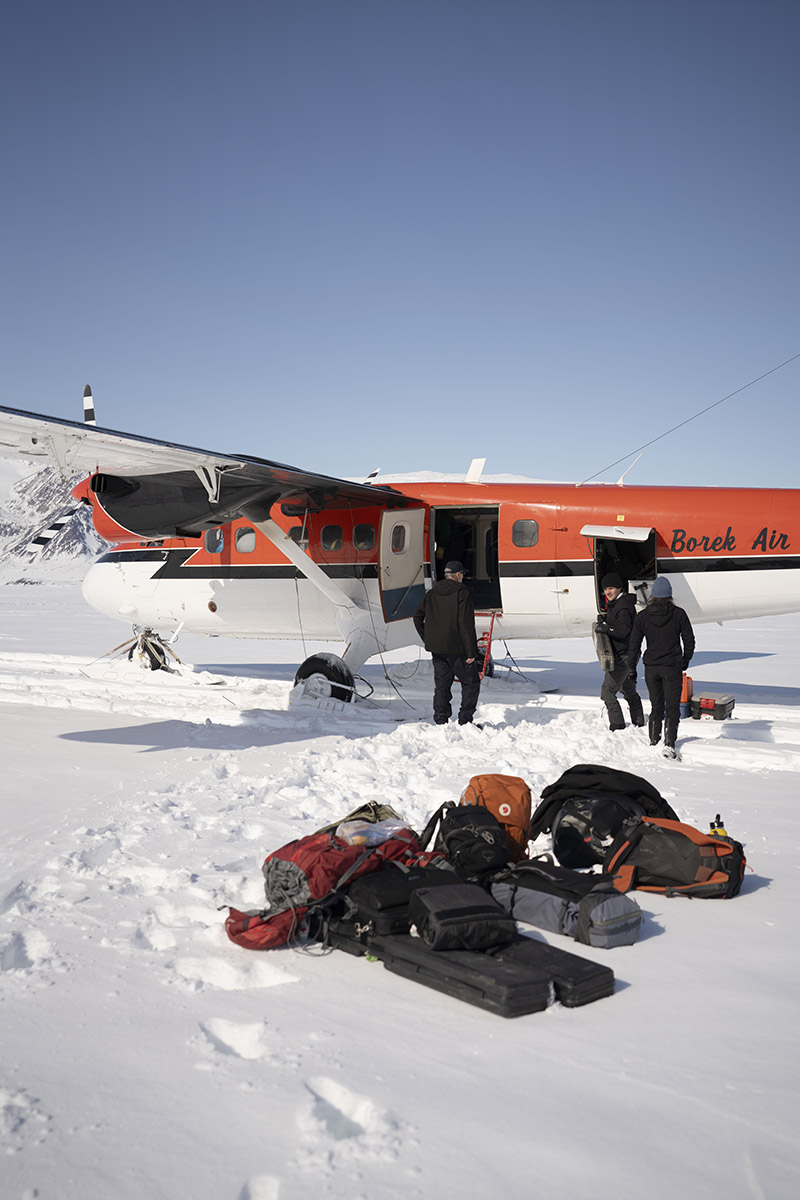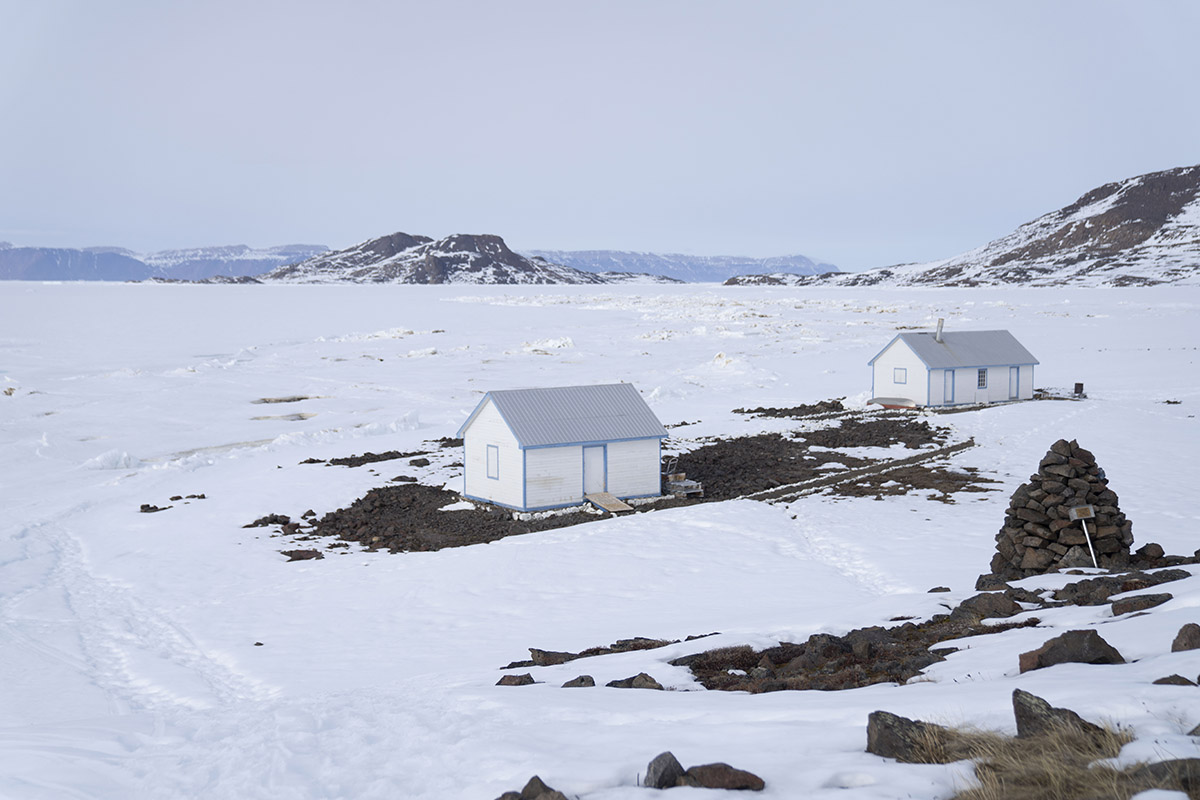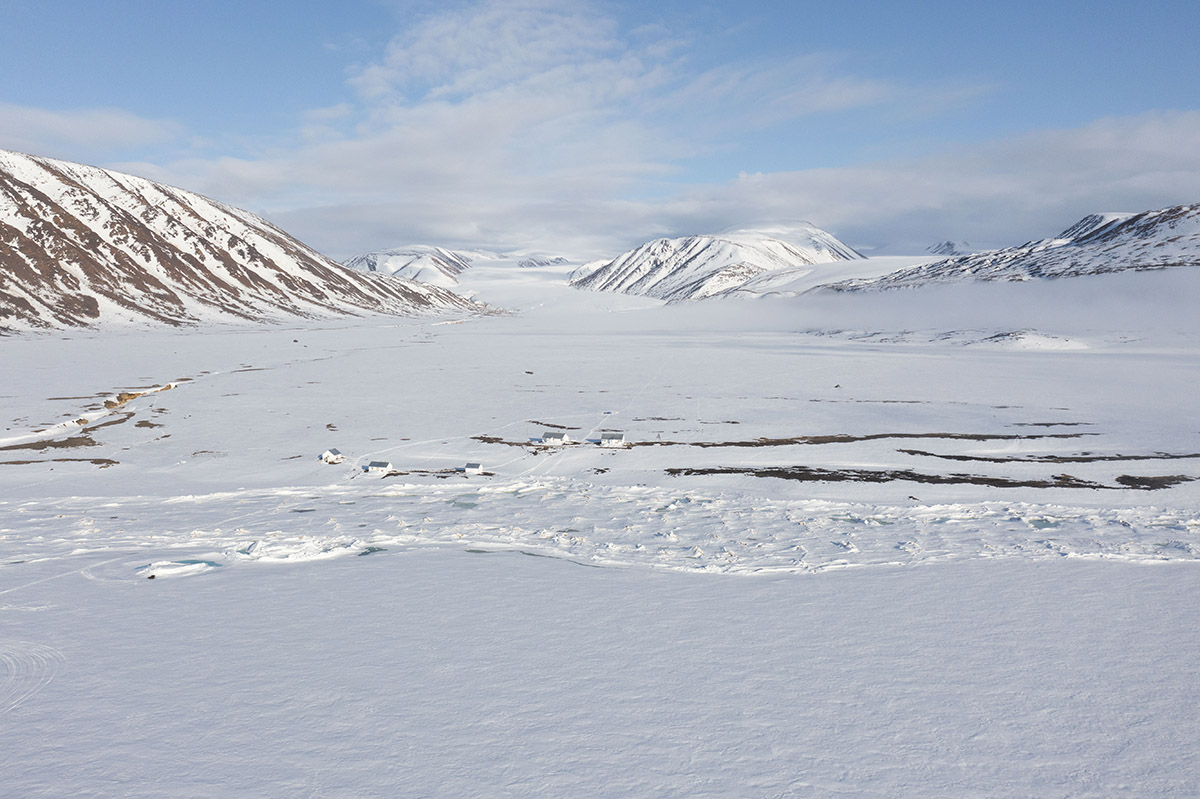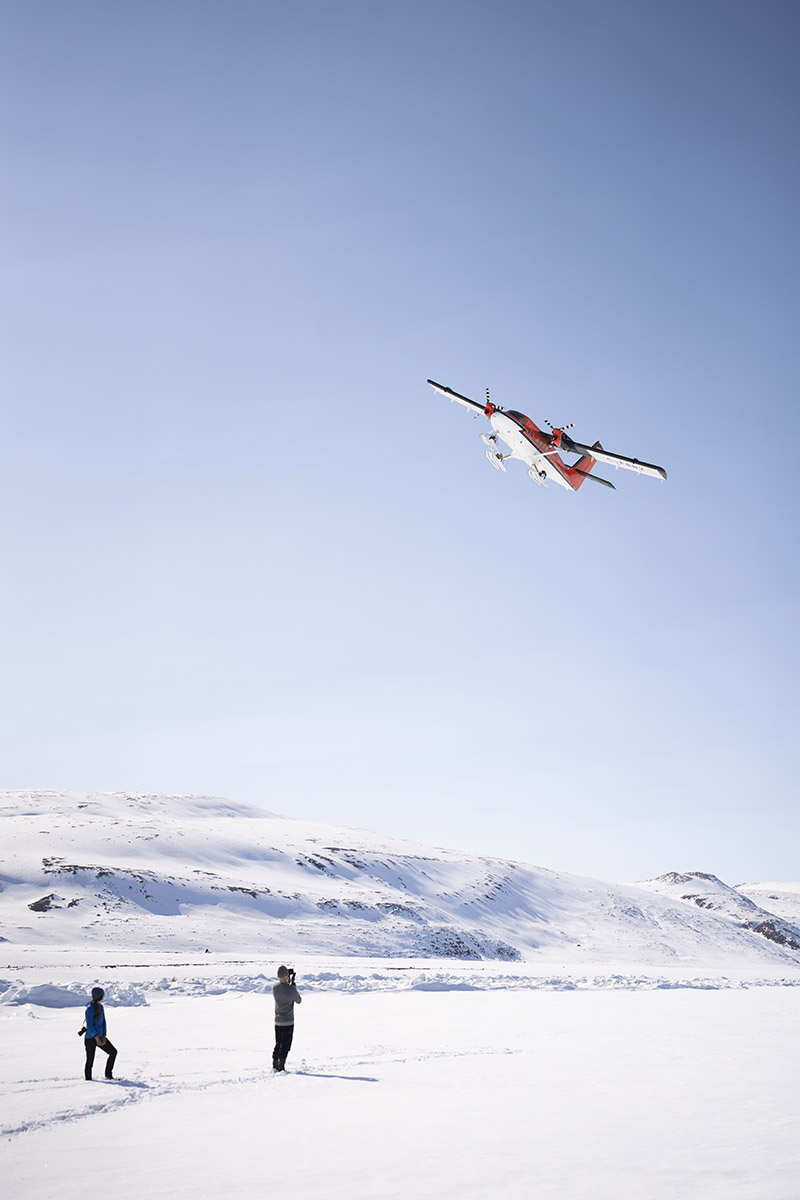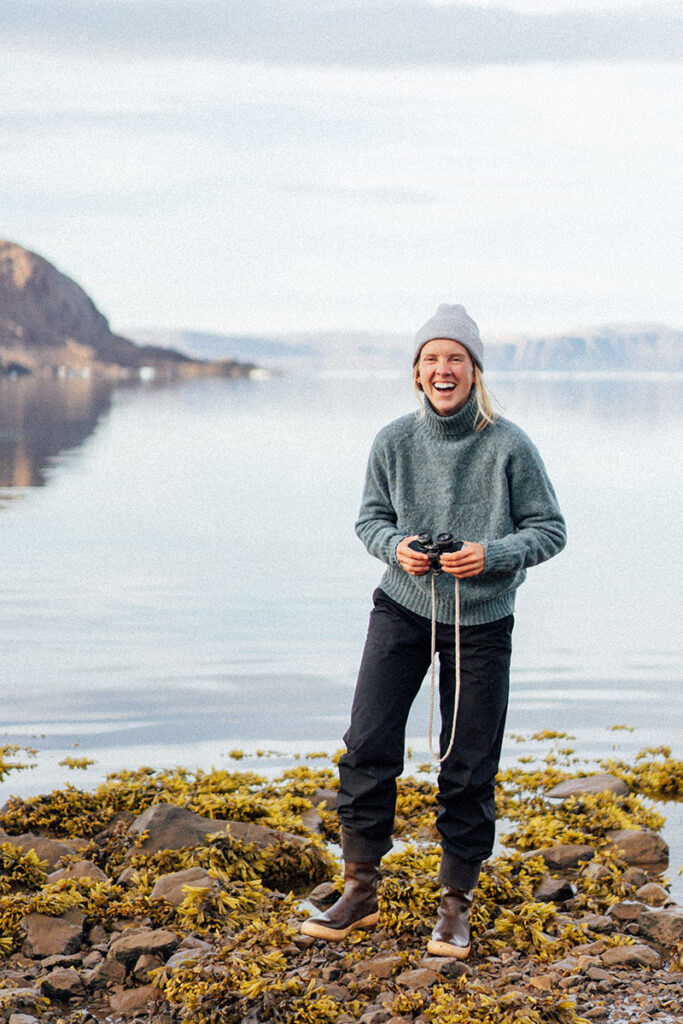When we first arrived at Alexandra Fiord, we landed on the sea ice with skis on our Twin Otter plane. Upon touching down, the skis went deep into the snowpack that covered the sea ice. As we stepped out, we dropped into more than a meter of snow and started to haul all of the gear a kilometer or so up to the cabins on shore. Never in Greg’s 44 years at Alex Fiord had he experienced even close to this amount of snow.
The majority of the High Arctic is considered a polar desert – very cold, very dry, and very little precipitation. However, as the climate warms, Arctic winters are getting significantly warmer and wetter. Precipitation, in the form of both snow and rain, is increasing in areas that have previously seen very little. This first encounter with climate change, turned out to be a theme for the whole season. By the end of June the snow still hadn’t melted, and the field crew was slowly losing their patience. Their work is focused on the the tiny plants that cover the tundra, meaning they have to wait until the ground is snow free. They could see their field season getting shorter by the day, and the amount of work they needed to do getting more and more compressed into whatever time was left, before the plane would return to come and pick them up.
This extreme amount of snow is just one of many signs of climate change Greg has been able to witness with his own eyes. When he first started coming to Alexandra Fiord in the early 80s, the weather and the season was predictable. But as the global climate has continued to change, extremes are becoming more and more common in the Arctic. In recent years, he has experienced extremely cold summers, extremely warm summers, summers with a lot of wind, and summers with no wind. More than that, he has experienced the Twin Glaciers at the back of the valley retreat hundreds of meters and lose shocking volume; something you should not be able to witness within a single lifetime.
The main research that has been conducted at Alexandra Fiord has been through the International Tundra Experiment (ITEX). ITEX is an international collaboration of researchers whose primary focus is to study and understand the impacts of warmer temperatures on tundra ecosystems by way of environmental manipulations like warming. The ITEX experimental warming design is simple: open top chambers (OTCs), which are 6-sided plexiglass enclosures with an open top, warm the surface of the tundra by 1-3˚C to simulate the warming predicted by climate change models. The OTC was designed by Greg and his research crew in the early 90s, and now there are dozens of ITEX sites using them across Arctic and alpine sites all over the world. At Alexandra Fiord, the OTCs have shown a general trend of accelerated phenology (the timing of important ‘life events’ like flowering), larger leaves, taller plants, etc., in comparison to the plants outside of the warming experiments. This is leading to a ‘greening’ of the Arctic – as plants grow bigger, taller, and into higher elevations and latitudes – which has huge implications for the global climate, as the darker surface of the tundra is able to absorb more heat from the sun and feed into a series of positive feedback loops that will continue to warm the Arctic.
While the ITEX studies at Alexandra Fiord will officially ‘close’ this summer, other ITEX sites all over the world will continue to monitor climate-driven tundra ecosystem changes.
Sofie, Jakob, and the Tundra Ecology Lab
Amplis Foto is joining Greg and his research crew this summer to document it all – in the hopes that we can help tell a story that will educate and inspire viewers about the science, history, and importance of this remote and beautiful part of the world.
Read the previous articles:



